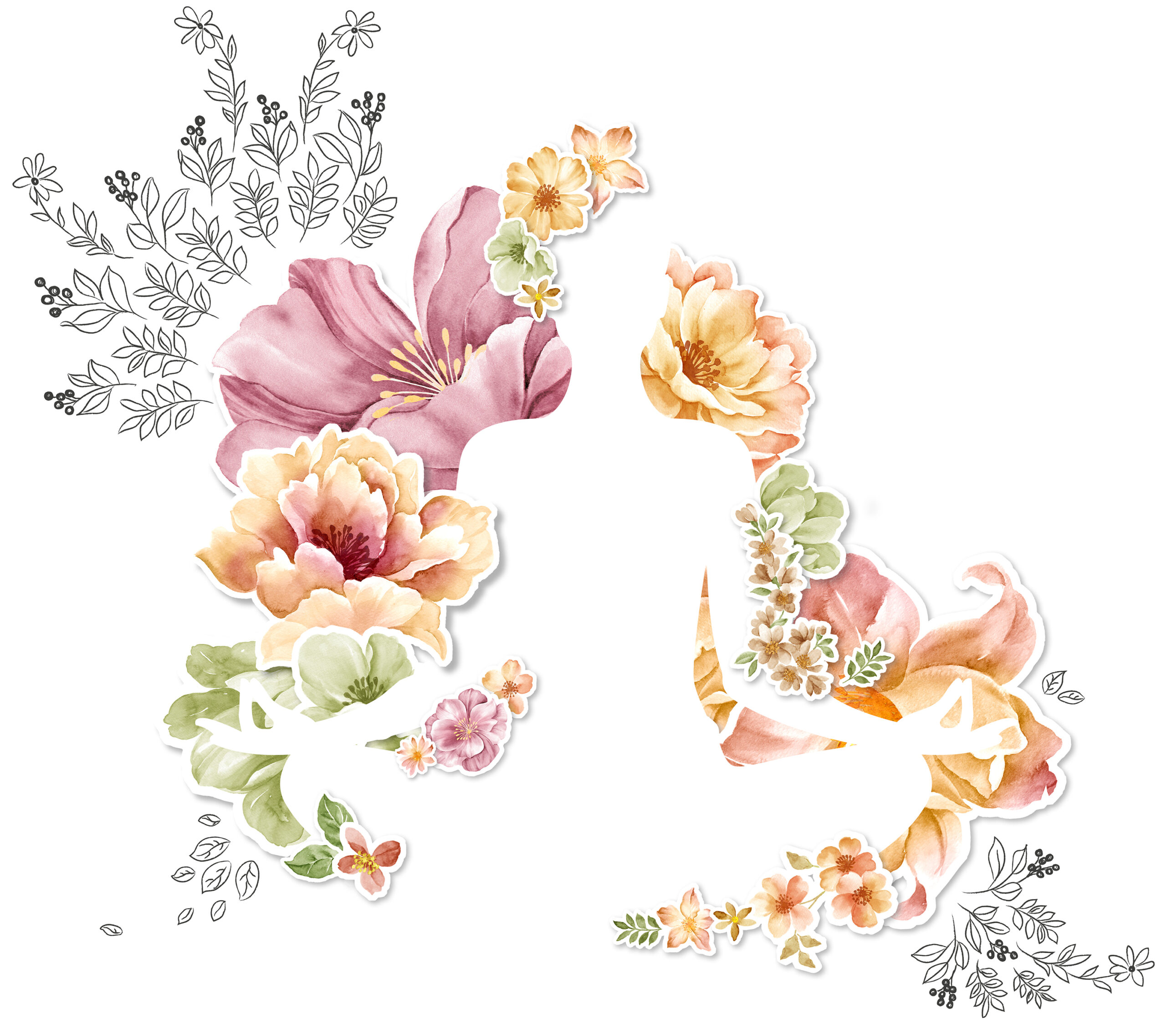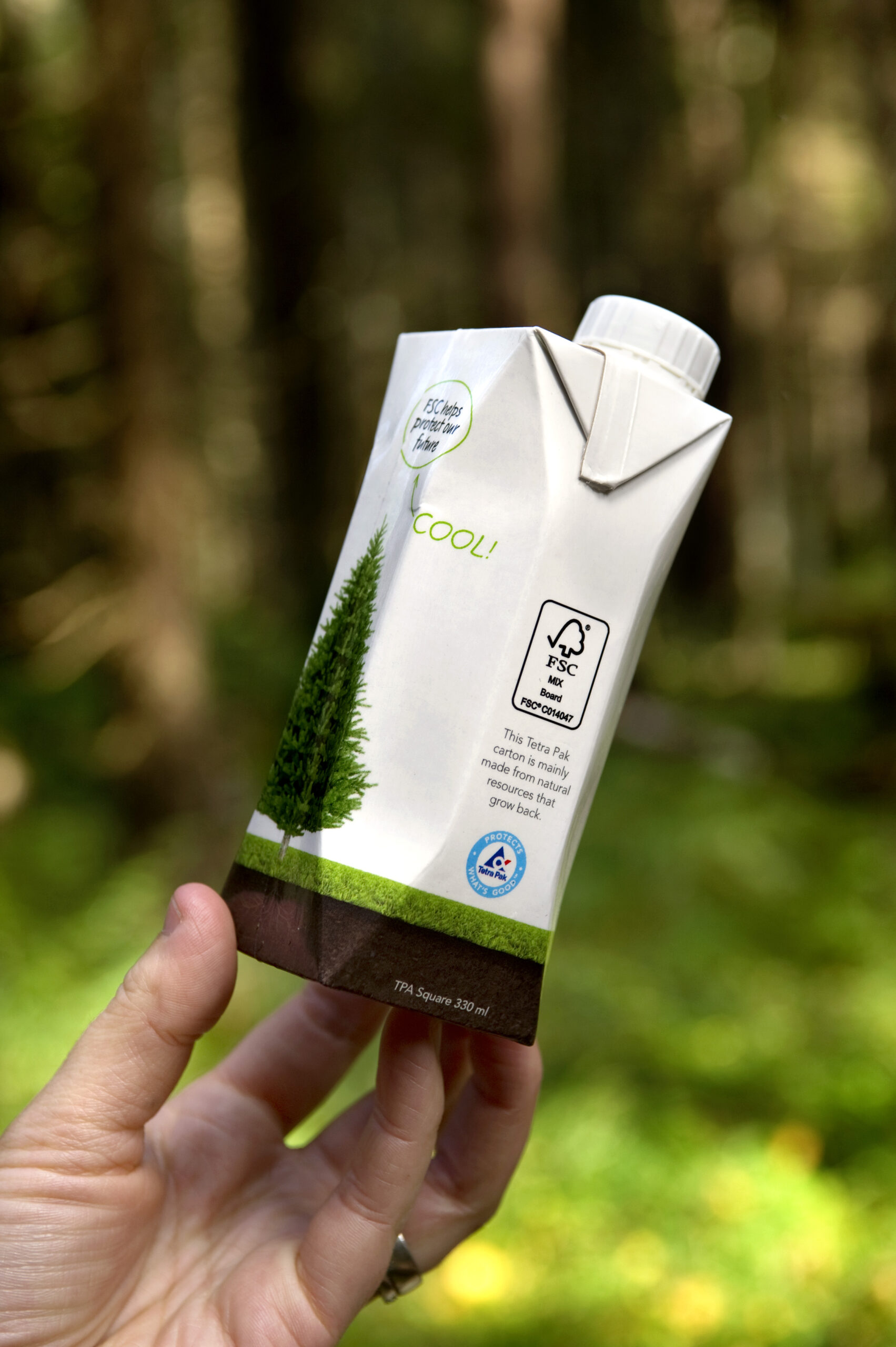How mammaries are far more magnificent than first meets the eye
Before I knew I was pregnant for the first time, it was clear something profound was happening to my breasts. They were bigger than ever, and so painful that I dreaded walking down stairs.
I’d carried my large mounds for 18 years and considered them an inconvenient burden, screaming out sexual messages when I just wanted to go for a run. But suddenly they were about to perform their raison d’être: they would feed the most darling thing I’d ever encountered, my baby.
After a few hiccups, they managed to do their job and these days I regard them in much higher esteem. Now, having just crossed the 40-years-old threshold, I’m starting to wonder if they could again become foe rather than friend. I keep hearing about cases of breast cancer, and that’s a road I don’t want to travel. But the ambivalence we can have for our breasts belies their intricate evolution through our lives.

The early years
Things are simpler in childhood when boy and girl chests are the same. Even baby boys have nipples and a rudimentary milk duct system hiding underneath. (Other male mammals, from bears to zebras, also have nipples.) Newborns sometimes lactate a little ‘witch’s milk’ soon after birth, due to exposure to their mother’s hormones.
The comfort of being roughly the same shape as everyone else ends at puberty. Ovaries start throwing out oestrogen, the female hormone that breast cells respond to so vigorously. Breasts bud and grow, firstly accumulating mainly fat and some connective tissue, but then developing milk ducts. Within two or three years a girl is overtly a young woman.
It can happen early. In a recent US study, one in ten white girls had started to develop breasts at age seven; the proportion was much higher for dark-skinned girls.
Why so early? Much research is being devoted to this question, not only because younger girls have to deal with the challenges of adolescence, but because the earlier puberty arrives, the greater the risk of breast cancer in later life.
There is no consensus on the reasons, although some scientists are exploring the possibility that endocrine-disrupting chemicals are involved in both the earlier age of puberty and increased later risk of breast cancer.
Developed breasts come in an astounding range of shapes, sizes and pertness – and the colour, size and shape of nipples and areolae vary widely. Having one breast larger than the other is not uncommon, and they sometimes point in different directions. Many women are dissatisfied with their breasts: too small, too big, overly saggy, and so forth.
(For a reassuring reminder that the human form takes many shapes and sizes, see the website www.007b.com, which includes a photo gallery where hundreds of women have uploaded non-sexualised photos of their breasts and described their feelings towards them.)

Mammals’ miracle
It’s one of nature’s greatest feats: we mammals can turn blood into milk to feed our babies.
The milk-making structures inside breasts look like tiny bunches of grapes, with stems leading to the nipple. The actual blood-to-milk marvel occurs in the grapes themselves, the alveoli. Alveoli get the ingredients they need for the job by blood vessels, and are supported structurally by ligaments and fat.
The hormone prolactin is involved in the transfer of ingredients into cells lining the alveoli, and increases when a baby suckles. Levels of prolactin are highest approximately 40 minutes after beginning a breastfeed, making a mother sleepy and relaxed, and helping the breast begin to make milk for the next feed.
Milk flows from the alveoli and along the ducts towards the nipple. This requires a ‘let-down’ (or Milk Ejection Reflex): a squeezy, tingling feeling (for those who can feel it) that is actually cells contracting around the milk-filled alveoli.
It happens when a baby’s suckling sends nerve-borne messages to the brain, which responds by releasing a hormone, oxytocin. Oxytocin then travels via blood to the breasts, and triggers the let-down squeeze. It can sometimes be set off by a baby’s cry, or even thinking about a baby.
Unfinished business
Although teenage breasts look the part and function well in the sexual arousal stakes, they are not the done deal. Unlike any other organ in the body, breasts remain unfinished in adulthood – until a full-term pregnancy is completed, that is.
“Breasts grow up when there’s a baby cooking one storey down,” writes Florence Williams in Breasts: A Natural and Unnatural History. Some scientists believe the in-limbo state of pre-baby breasts, with cells yet to morph into milk-making structures, makes them vulnerable to carcinogens.
There is evidence that young breasts are more vulnerable: after the atomic bombs were dropped on Japan in World War II, breast cancer rates increased only in survivors aged less than 20 at the time of the bombing. Similarly, one study showed that DDT exposure increased breast cancer rates, but only in women aged less than 20 when DDT use was at its height.
Meanwhile, long-term research led by scientist Elizabeth Guillette, of the University of Florida, showed that the daughters of mothers exposed to pesticide spray in the Mexican state of Sonora’s Yaqui Valley, lacked the ability to breastfeed.
As the girls matured, their breasts became much larger than normal, but they lacked enough mammary tissue to produce milk. Guillette published her findings in the journal Environmental Health Perspectives.
Pregnant breasts
What happens to breasts when a baby’s on the bake? They grow, and often hurt for the first few weeks. High levels of oestrogen, progesterone and other hormones transform breasts into a baby’s most-needed item: feeding equipment, comprising fully developed alveoli, ducts and sinuses.
As the months pass, the areolae darken. By mid-pregnancy, the first stage of lactation has already begun, as well-developed blood vessels supply breasts with milk ingredients and breasts begin to produce colostrum.

Cultivating the art of breastfeeding
After the baby is born, the placenta is delivered. Pregnancy hormones plunge as a result, which kicks off milk-making. High-protein, immune cell-laden colostrum is produced, and around the third day it becomes diluted and sweeter to sustain the growing baby. This is known as the ‘milk coming in’.
During breastfeeding, the goodness in colostrum remains present, and becomes more concentrated again during weaning. After the milk comes in, breasts may become full and uncomfortable unless the milk is frequently removed – either by baby feeding or hand expression.
“Painful engorgement, which is different from breast fullness, can cause a number of complications,” says lactation consultant and mother of six, Deborah Tetlow. “But with effective and frequent feeding, a newly breastfeeding mother can usually avoid engorgement altogether,” she adds.
Between 6-12 weeks, once the body’s hormones are regulating things, breasts produce only as much milk as the baby needs. The only signals breasts get about the baby’s needs are the amount of suckling it does, and the amount of milk removed. Interfering with this – letting the baby feed only at certain clock times, for example, or giving the baby formula – means the breasts can get inaccurate messages about the baby’s requirements.
Parenting manuals may stress the importance of routines, but studies show that breastfed babies typically do not feed in even spacings, but cluster feeds together, often in the evening. A newborn baby typically feeds the most between 9pm and 3am.
Low milk supply is one of the main reasons women give up breastfeeding, says Auckland lactation consultant Barbara Fletcher, who acknowledges how distressing this is. “It’s best to follow the baby’s cues,” she says. “The only way to increase milk supply is by removing milk from the breast frequently, and feeding the baby is most effective at doing this.”
Barbara recommends women whose babies seem hungry – which often happens during growth spurts – feed frequently for a day or two to give their bodies the signal that more milk is needed. “If you relax and just go with it, it can increase quite quickly,” she explains.
Sometimes, however, a baby might be unsettled for other reasons, such as reflux, colic and illness, and insufficient milk is blamed.
The other major problem Barbara encounters is sore nipples, which means that something is wrong. “If it hurts, a mum needs to get help to find the underlying cause,” she says. The baby’s latch and positioning are common causes, but there are several other possible reasons.
Barbara’s strongest recommendation for successful breastfeeding is to acknowledge that breastfeeding is a learned skill, and if possible attend a breastfeeding class during pregnancy, before the exhaustion and emotion of a new baby hits. Having an idea of what to expect, realising every baby and mother pairing is unique, and knowing who to contact for help are crucial.
“Sometimes things go wrong quickly,” she points out. “The phone number of a breastfeeding support person is the most important thing to stick on your fridge.”
To find a lactation consultant near you, visit www.nzlca.org.nz
Other useful websites include www.lalecheleague.org.nz and www.breastfeedingmadesimple.com

Latching on
Getting your baby ‘latched on’ is crucial to successful breastfeeding. With a good latch the baby will be ‘tummy to tummy’ so it doesn’t have to turn its head to reach your breast.
The baby’s chin will touch the breast and there will be more areola showing above the top lip than below the bottom lip. The baby’s lips will be flanged outwards and it will feel comfortable. See www.biologicalnurturing.com for more.
• Get in a comfortable position – either sitting up straight, reclining back or lying down.
• Position baby close, tummy to tummy.
• Relax! Babies have lots of instincts and abilities to latch on themselves.
12 amazing facts about breastfeeding
1 Breasts can make lots of milk – around three litres daily when feeding triplets.
2 Breast milk has thousands of components, including hormones, living cells, digestive enzymes and growth factors, with more being discovered all the time. Formula companies try to replicate breast milk but at present they can’t.
3 Breast milk contains high levels of a prebiotic sugar called ‘human milk oligosaccharide’ which humans can’t digest, but which feeds beneficial gut bacteria. Breastfed babies have quite different microbes (healthy bacteria and fungi) in their gut than formula-fed babies, including a bacteria that’s wired to feed on human milk oligosaccharide. Gut microbes are considered vital in immune defence.
4 When a baby is skin-to-skin with its mother, her breasts will individually increase or decrease their temperature to keep the baby at its optimal temperature.
5 Even a moderately malnourished woman can produce good-quality breast milk, according to the World Health Organization. Only if a woman is seriously malnourished does the quantity of breast milk decrease. Eating a wide variety of nutrient-dense foods remains the best way to get all the goodness required.
6 Breast milk is customised to the baby. Milk for premature babies contains more protein, fats and immunological factors, and a year on, the milk contains more fat and cholesterol. Milk produced in hot weather is more watery, meeting the need for extra water.
7 Flavours from what the mother has eaten are transferred into breast milk, whereas formula always tastes the same. This is thought to be why breastfed babies eat a greater variety of foods at age two.
8 Breast milk contains antioxidants as well as many antimicrobial properties. It can even be used to treat minor infections. Breasts continually manufacture antibodies in response to germs the mother is exposed to in her environment – either ingested, inhaled or by physical contact – and pass these antibodies on to the baby.
9 New research indicates breasts makes gender-specific milk: higher in fat and protein for boy babies, lower in fat and protein for girls.
10 Tension can block a woman’s let-down reflex. This is why stress can play havoc with breastfeeding, and why some women can feed their babies fine but can only express a little with a pump.
11 Exclusive breastfeeding can delay the return of menstruation and fertility for many months.
12 Fatty acids found only in breast milk are important for brain development, meaning babies are more likely to achieve their full IQ potential. Other qualities protect baby against infections and viruses, and stimulate development of the intestine, nerves and retinas. Breastfed babies have greater protection against obesity, some cancers, diabetes, asthma, allergies and Sudden Infant Death Syndrome (SIDS) compared to non-breastfed babies.

And the mother?
Several studies have shown that breastfeeding helps women lose the weight they gained during pregnancy. But breastfeeding is also good for a woman’s health. A woman who has breastfed has optimal protection against obesity, uterine cancer, ovarian cancer, heart disease, osteoporosis and rheumatoid arthritis. These benefits increase in proportion to the duration of breastfeeding.
In particular, breastfeeding for a long time lowers the risk of breast cancer – and the more babies, the better. Emeritus professor Charlotte Paul, a medical epidemiologist at Otago University, was part of an international research group that drew together many different studies to look for a consensus on hormones and breast cancer risk.
The group concluded that for each full-term pregnancy, the risk of breast cancer dropped by seven percent and each year of breastfeeding lowered the risk by more than four percent more. The group concluded that breast cancer incidence among Western women would halve if they had as many children as those in the developing world did until recently, and breastfed them for as long.
Breast detox
Breast milk has been around for millions of years, but now it has new ingredients: unnatural compounds that contaminate our bodies. Babies get more of these fat-loving compounds from breast milk than during pregnancy, but the amounts are miniscule compared to those a baby will be exposed to simply from living in an urban environment.
Some contaminants are not stored in fat, which makes them more fleeting. These are absorbed from the mother’s skin or digestive tract and quickly broken down.
Substances found in breast milk include DDT, PCBs, BPA, perfluorinated compounds from non-stick products, brominated flame retardants, the pesticide endosulfan, the germ-killer triclosan, phthalates, synthetic musk fragrances, mercury, lead, benzene, arsenic and more.
The evidence for these contaminants affecting babies, though, is scant. Of more significance are the toxins generated from smoking, alcohol, party pills and other recreational drugs the mother may ingest – though even in these cases breastfeeding is still preferable over infant formula, as long as the mother delays breastfeeding to let the drug begin to pass out of her body, or feeds the baby breast milk expressed during a drug-free time.
In 2010 the World Health Organization recommended that all mothers (even those who are HIV positive) practise exclusive breastfeeding for the first six months and that mothers not infected with HIV breastfeed until their infant is two years or older.
Besides, cow’s milk also contains contaminants. For example, milk collected from parts of Southland has to be diluted with milk from other places due to its high level of DDE, the breakdown product of DDT, which was heavily used in New Zealand. Add to that possible contaminants in other formula ingredients, the containers it’s stored in, the water it’s diluted with during preparation, as well as the bottles, teats and any cleaning products used.
Even taking any problems into account, there is mounting evidence for breastfed babies having better short- and long-term health, and research findings are overwhelmingly in favour of exclusive breastfeeding for the first six months of life.

The older breast
The fullness of post-baby breasts disappears at weaning, or soon after the pregnancy if a woman doesn’t breastfeed. This is because the milk-making structures atrophy (they are rebuilt if another pregnancy occurs). Breasts shrink accordingly, and fat and connective tissue then take up some of the empty space. The final result can be smaller, larger or perhaps the same as pre-pregnancy breast size.
Bra shop ladies know all about this. “It can get a lot harder to find the right bra as you get older,” the comforting sales assistant told me when she saw the ten discarded models in the changing room. Much of the volume shifts down the ski slope, landing avalanche-style at the bottom.
Breastfeeding, however, should shoulder none of the blame. Studies have shown that sagging after pregnancy happens whether or not a woman breastfeeds – even if she breastfeeds for a long time. Sagging is more likely in smokers, women with large pre-pregnancy breasts, and heavier women. It increases with each pregnancy and, inevitably, age.
Hence me visiting the lingerie shop. An elegant and well-upholstered bra is the order of the day for these long-serving, miraculous mounds – they’ve earned my respect.







